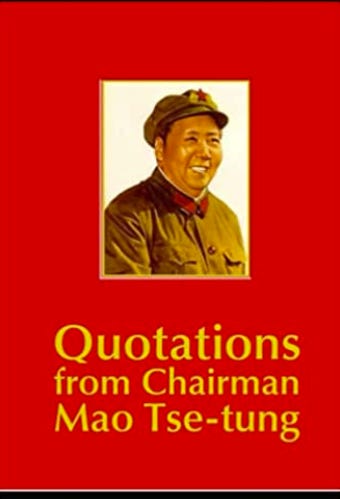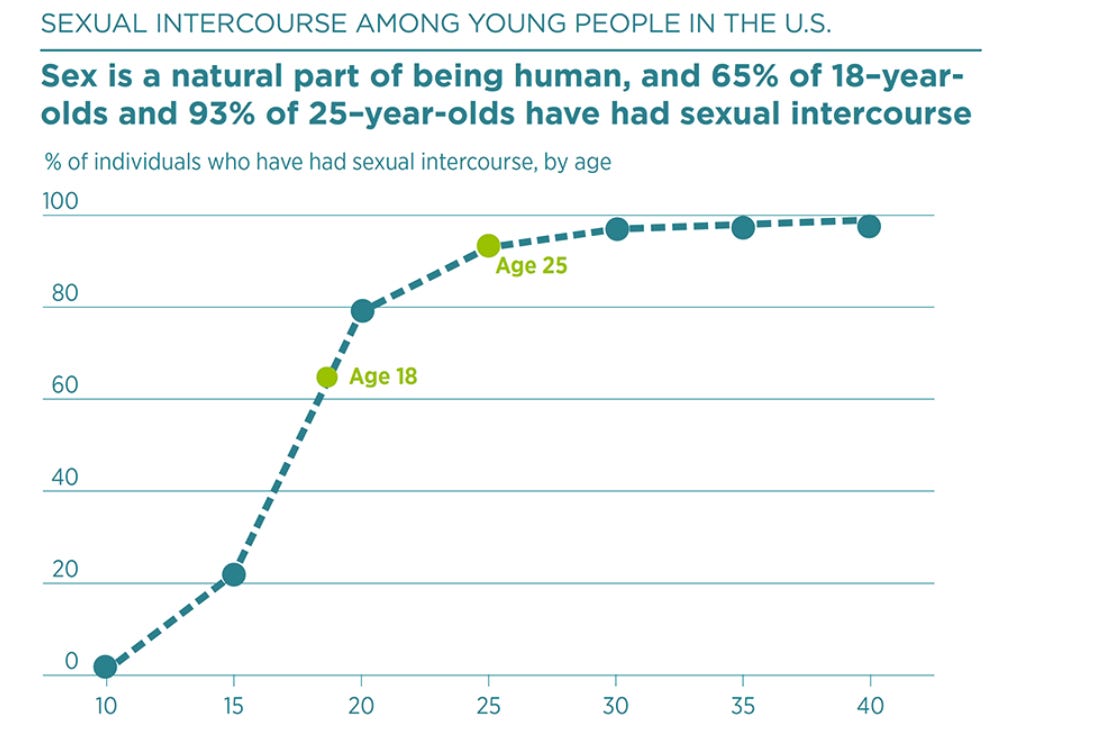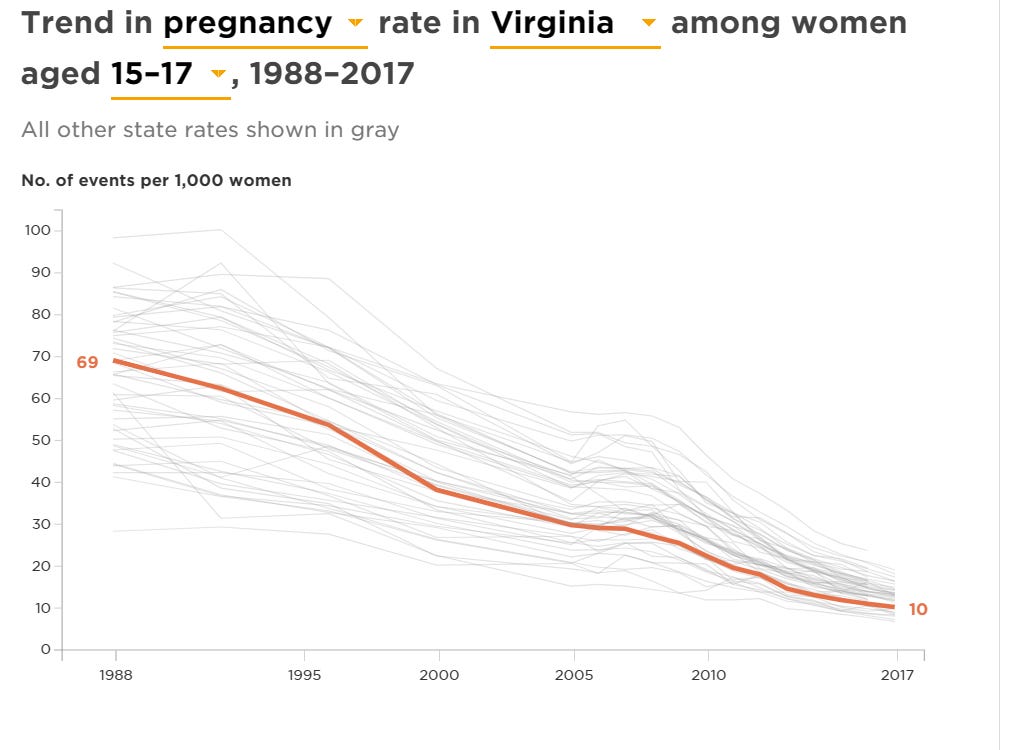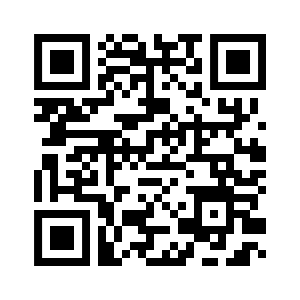Monday June 5, 2023
The Renwick and James Monroe | Book Banners Need to Think More about Young Adults | Juneteenth | Coming Tuesday
Where is Fredericksburg going, and what should it become? That’s the point of this piece, and more to come from others this summer. Want to submit an idea? Send it to editoratf2s@gmail.com.
A MODEST PROPOSAL: The Renwick Complex -- Home of the UMW James Monroe Presidential Library?
Once envisioned for the old Maury School, could the University of Mary Washington be the perfect partner for a world-class presidential library?
by Shaun Kenney
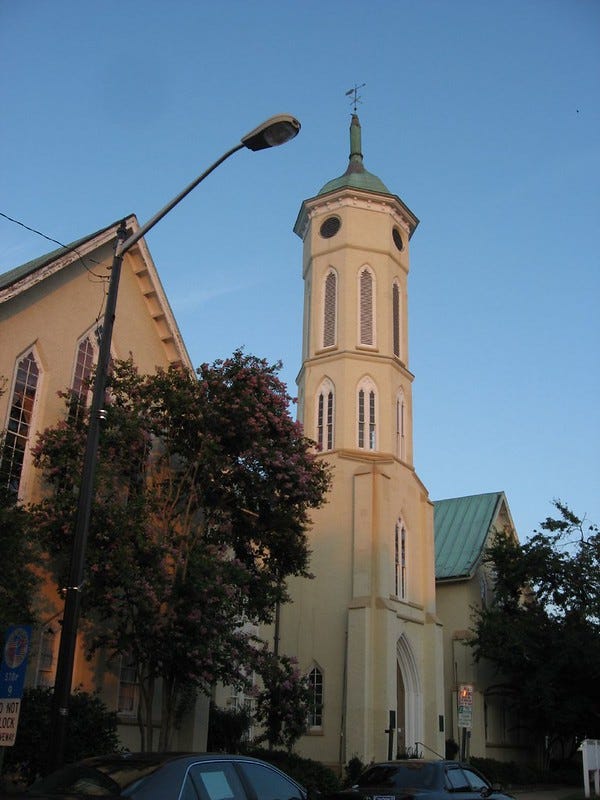
As the Fredericksburg region has grown over the last 20 years, so too has our understanding as to what the wider legacy of Virginia’s history means to future generations.
No longer the Crossroads of the Civil War or George Washington’s Boyhood Home, Fredericksburg has come to embrace some of the darker and more neglected elements of our history. Fredericksburg as a destination port for the slave trade co-mingles with our history along the Underground Railroad, where thousands of African slaves carried one another across the “rapidly rising waters” of the Rappahannock. Hunter Ironworks became the arsenal of Virginia democracy for a time when freedom was an idea restricted by race, sex, and class whose embers caught flame in the crooked timbers of humanity.
James Monroe was the only national public figure to ever reach the degree of popularity as one of Fredericksburg’s other favorites sons, none other than George Washington. Monroe’s accomplishments both as politician and statesmen are encapsulated in his Monroe Doctrine, a policy invoked by luminaries such as Teddy Roosevelt, Jack Kennedy, and Ronald Reagan time and time again.
Yet Monroe’s darker legacies – his participation in the regime of slave labor and as the Virginia governor who violently put down Gabriel’s Rebellion – reminds us that America’s rise towards a “more perfect Union” has not been on a feather pillow.
The old Fredericksburg Courthouse was designed by the famous architect James Renwick Jr. of Smithsonian fame, an 1850s era Gothic Revival whose connection to higher purpose is linked to both science and faith, as his design of St. Patrick Cathedral in New York during a time when Catholics were decidedly “other” reminds those who pick up on the architect’s signature design.
The Idea of a Library
The legacy of former President James Monroe is a trickly thing to nail down, held in trust by no less than three organizations: the Fredericksburg-based and University of Mary Washington sponsored James Monroe Museum and Memorial Library located on Charles Street, Ash Lawn-Highland sponsored by the College of William and Mary near Monticello, and the James Monroe Memorial Foundation’s preservation efforts centered on his birthplace near present-day Colonial Beach.
Many years ago, there was a concerted effort to build a presidential library at the old Maury Elementary School, now converted into condominiums. Infighting sadly broke the back of any effort to forge the three elements into one whole, but the promise of a national-level research library in the heart of Fredericksburg was tantalizing, even hopeful, during a time where history remained a defining part of the city and the region.
As recently as 2016, some reminiscence of what the Renwick Courthouse could be was mentioned in the pages of the Fredericksburg Free Lance-Star:
Now, as for the old courthouse—the Renwick Building is a very important part of Fredericksburg that needs to be protected for the future. I think that more thought needs to go into what to do with this iconic building.
Another thought is the need for a James Monroe Presidential Library. We have the James Monroe Museum and Memorial Library, which is administered by University of Mary Washington. They do a great job at the building on Charles Street, but let’s encourage them to move to center stage on Princess Anne Street, in a grand building that would be a fitting home for James Monroe’s works.
Mr. Russell could not be more right, could he?
No less a luminary than Rodger Provo though as much in 2012 when he mused on the possibilities of what could be a thriving centerpiece of Virginia thought and culture in the very heart of Fredericksburg, seeing the University of Mary Washington as central to the idea. Editorials have been written commending the idea as late as 2005. The late John Goolrick – a man whose memory should not be forgotten nor his approval for a venture lightly taken – commended the idea back in 2003.
So with the city fathers nodding from afar, let us take a look at the old Renwick Courthouse and ask ourselves whether Fredericksburg deserves such an institution, one where Monroe’s legacy could be examined in the fresh light and the opportunities to present Virginia history in its entirety can be explored?
A National Treasure in the Heart of Fredericksburg
Of course, imagine the non-Fredericksburg native who may in the off chance believe that this is a project where one must be convinced through argument! Such people exist, dear Virginian, but allow me to set forward our best arguments to our shareholders one brick at a time:
THE UNIVERSITY OF MARY WASHINGTON: One finds it nearly remarkable how few Fredericksburg natives have walked the long concourse at Mary Washington, much less taken advantage of their Great Lives series during the course of the year. With an annual budget of $140 million and an endowment just over $58 million, the University of Mary Washington certainly has a stake in the Monroe legacy.
Yet as with many Virginia colleges and universities, UMW struggles to maintain its relevance in an ocean of whales. UVA, Virginia Tech, VMI and William & Mary would all drown Mary Washington’s budget. Yet consider for a moment that a James Monroe Presidential Library would be a national fundraising opportunity, with a national audience and a national inflection point. Such a project built into the heart of Historic Fredericksburg and 50 miles outside of Washington isn’t just a diamond in the rough, but a diamond in a sea of diamonds.
Historic Fredericksburg isn’t dead by a stretch, and the opportunity to build a national-level resource arguably in walking distance to the main campus is a great attraction indeed. Such a move would turn Mary Washington into a premier institution for history, political science, archaeology, and historic preservation with the right sort of planning and foresight. In fact, it is a masterstroke.
THE CITY OF FREDERICKSBURG: If the decision to keep the Renwick Courthouse in public hands is firm, then the option of a public-private partnership to turn the courthouse into a bunch of apartments, condos, or restaurants is about as boring as it gets.
What Fredericksburg lacks is a centerpiece. Note that a James Monroe Presidential Library in the heart of the city doesn’t preclude the idea of income producing options such as restaurants (vital for visiting professors and dignitaries), but rather enhances the project writ large. Imagine the old courthouse filled to the brim with students and citizens listening to Tim McGrath go over his latest biography of James Monroe. Or imagine Annette Gordon-Reed sharing the importance of Juneteenth. Or the bitter details of the socio-economic rationale behind Gabriel’s Rebellion in 1800.
Not an empty husk looking for tenants, but a crown waiting for jewels. The Smithsonian’s elder sister deserves such an investment – does she not?
THE COLLEGE OF WILLIAM AND MARY: What if it were a joint project? What if we get all the resources and reputation of the College of William and Mary and the interest of Colonial Williamsburg on board? Does Mary Washington have to reap all the glory alone? Perhaps we ought to… but we don’t have to.
Yet William and Mary brings another angle beyond Monroe’s Virginia connection, but rather their international relations program whose students are actively grappling with a changing world where the Monroe Doctrine is at higher risk than ever before.
THE JAMES MONROE FOUNDATION: Bringing together all three boards may not be possible, but it would surely be more interesting for tourism to link Westmoreland to Albemarle with Fredericksburg as the hub on the wheel.
TOURISM: Gobs of tourism dollars. Gobs.
THE GEORGE WASHINGTON FOUNDATION: Between Kenmore and Ferry Farm? How cool would it be to have a national-level resource right in the heart of Fredericksburg?!
THE WASHINGTON HERITAGE MUSEUMS: The list grows long! Mary Washington House, the Rising Sun Tavern, Hugh Mercer Apothecary, the new St. James House (which I have sadly not visited yet). How would they all benefit from a James Monroe Presidential Library?
AFRICAN AMERICAN HISTORY and THE REAL OPPORTUNITY: Most people have no idea that thousands of people dared to cross the Rappahannock River to freedom, and not just while tens of thousands of Yankees were parked across the river at Chatham.
This is perhaps the real opportunity for the James Monroe Presidential Library, if for no other reason than the untold story – and the opportunity to build from the ground up – the story of an American president where the voices of enslaved persons make the foundation rather than an appendage to the story. History preserved with a modern institution, a sizeable campus, and more than this a Founding Father who grappled with many of the same questions we are grappling with today – in Virginia, in America, and internationally as well.
Such an approach would be unique and one-of-a-kind in America, and with foundations working assiduously to attempt to reforge Monticello and Montpelier along such lines and finding resistance, the attraction of a clean slate might prove irresistible to those looking to add their voices to the American lexicon.
Leadership, Diplomacy, Statesmanship
One would be hard pressed to explain how this is a bad idea to a soul, right?
Of course, the difficulties are twofold. First and foremost, there must be a recognition that this sort of project would have to be a partnership between the University of Mary Washington and the City of Fredericksburg, that this is not a fob-off as the ill-fated National Slavery Museum which former Governor Doug Wilder tried unsuccessfully to build in Fredericksburg. Such a commitment will require investment, time, patience, but most of all a vision respected by both parties.
Second and perhaps more difficult will be the James Monroe Presidential Library’s ability to escape the politics of the present day. One hopes that by not putting the problem in words, we can escape its difficulties with this one magic formula: that we sincerely believe that everyone who participates is doing so in the very best of faith and for the common good.
Yet perhaps that problem is a problem for the future. Our immediate task is perhaps one of recognition. If we sincerely believe that the Renwick Courthouse complex is worthy of renovation, and we additionally believe that the space deserves something better than mere commercialization, then perhaps it is time to rescue an old idea and bring it to fruition.
Certainly, the University of Mary Washington deserves such an institution and Fredericksburg deserves the jewel in her crown. Certainly, the city fathers of the past – John Goolrick among them – are smiling favorably on the idea. Perhaps more certain is the fact that our future world desperately requires the spark and engagement this national-level institution would create.
Give the James Monroe Presidential Library a chance, folks. The fruits are simply too great to ignore.
COMMENTARY: Book Banners Think They’re Protecting Children …
… They’re simply trying to stave off what they don’t want to face
by Martin Davis
Before I had reached the age of 16, I had already consumed a library of books that no doubt caused the adults around me no shortage of concern. Just some of the titles:
What Is to Be Done? V.I. Lenin - Written in 1902, it’s a look at what the Socialist Democrat movement, then in disarray, needed to do to regain its presence and grow. Lenin’s conclusion? “Put an end to the third period.”
Quotations of Chairman Mao Tse-Tung: The Little Red Book - a collection of sayings from Chairman Mao, it was the most pervasive book in China during the Cultural Revolution, and is where the famous phrase “Political power grows out of the barrel of a gun” was printed.
The Rise and Fall of the Third Reich - William Shirer’s classic study of the rise of Hitler, the Holocaust, and the Second World War.
Lady Chatterly’s Lover - D.H. Lawrence’s classic look at a norms-breaking sexual relationship between an English lady of high social standing and a woodsman.
The Joy of Sex - An explicit guide to adult sexual activity with drawings and graphic descriptions. The copy was borrowed from one of my friend’s parents and quickly made the rounds in our neighborhood.
Howl - Allen Ginsberg’s critical look at 1950’s America.
Beyond the books that both shocked my parents (the ones they knew I was reading, anyway), and stoked the sexual imaginations of my friends and I, were the magazines.
MAD magazine in particular was an irreverent look at movies, politics, parents and parental authority, schools, you name it. If it could be speared with sarcasm, MAD speared it.
No doubt, had my parents gone to the public library to protest what I was checking out, or gone to the school board to rant about what was on the shelves, I would have found another path to read all the things that were new, exciting, and yes, even a little scary, to a growing young adult.
For in my eyes, that’s precisely what I was striving for - adulthood. The works of Mao and Lenin raised serious questions for a young man growing up against the backdrop of the Vietnam War about working-class people, inequalities, and political power. The Third Reich had scarred my grandparents and parents, and I wanted to understand what it was about that movement and war that damaged them so horribly.
Lady Chatterly’s Lover and The Joy of Sex were great sources of information for a young man struggling with sexual awakening - both the excitement and the fears that come with that.
This was the adult world that I could see coming at me like a freight train - and it was terrifying. Each of these books helped me to wrap my head and my hands around my fears and my excitements in tangible ways that made the future considerably less frightening.
Far from scarring me intellectually and emotionally, they helped to mature me and to begin to grapple with the adult world around me.
Not Childhood, but Adulthood
Adulthood, however, is precisely what today's book banners and book burners are trying to delay. Indeed, they are in denial about the very adult thoughts and habits of teenagers, who are struggling to learn to handle all that is new about their bodies and their minds in a rapidly changing world.
Consider the language book banners use.
At Spotsylvania School Board meetings and in Mark Taylor’s monotone and intellectually stunted defense of book bans, the discussion is framed again and again around protecting “children.”
And it is clear that in the minds of the book banners, “children” includes anyone in high school.
Adele Uphaus’s excellent story last week about the 108 copies of books removed from school library shelves made one detail very clear. These books were coming off high school shelves.
“More Happy than Not” by Adam Silvera was the title with the most copies in school libraries, according to a March 28 inventory, which The Free Lance–Star received last week as the result of a request made in March under the Freedom of Information Act.
There were 22 copies of Silvera’s book across all five high school libraries.
The Massaponax High School library possessed the division’s only copy of “Water for Elephants” by Sara Gruen, and the only copy of “Dime” by E.R. Frank was at the Riverbend High School library.
There were two copies of Pulitzer Prize-winning author Toni Morrison’s “The Bluest Eye” — one at Massaponax and one at Riverbend.
There were also just two copies of “Nineteen Minutes” by Jodi Picoult, at Massaponax and Spotsylvania high schools.
All five libraries owned copies of “Beloved,” also by Morrison, for a total of eight copies across the division.
Of the 14 titles that Taylor ordered removed from school libraries because they contain “sexually explicit” content, five were found at all five high school libraries.
Let’s be clear - In high school, we are not dealing with children.
We are dealing with young adults who are on the verge of being legal adults, and are already facing very real adult consequences when they misstep. This is especially true in the area of sex.
The book banners like Taylor are overtly concerned that we are oversexualizing our children and harming them psychologically for life.
But there is good reason to believe that the openness to sexual discussion over the past 40 years has had precisely the opposite effect.
Teen sexuality has remained relatively constant for years. Even though recent evidence suggests teen sexual activity is in a period of modest decline, by age 18 some 55% of teens will have engaged in sexual intercourse. Some sources, such as the Guttmacher Institute, place the percentage even higher.
There should be nothing surprising about this.
Teenagers are on their way to adulthood. It is only natural that they engage in adult behavior.
But as our openness to talking about sex exploded over the past 50 years, and contraception has become more common, teen pregnancies have declined sharply. The following graph for Virginia (also from a study published by the Guttmacher Institute) is very much in line with other states in the union.
The reasons for the decline are not fully understood, but there are two contributing factors. Girls are delaying sexual activity - arguably because they are more empowered to pursue education and professional careers and so are more career-oriented - and much more likely to use contraception.
In both cases, that we are talking more openly about sexuality is having a positive impact on teenagers and their sexual habits.
The idea should not be to shield young adulthoods who are moving into adulthood from sex (or frank discussions about alcohol, drugs, violence, and other difficult topics), but to be more forthcoming about these subjects.
Nota Bene: Abstinence education has repeatedly shown to be a failure at delaying sexual activity among teens.
The very books that Taylor and others are working to ban are precisely the books that are empowering high school students to deal with their own sexual awakenings in more-realistic ways.
Does this mean that we should not have open conversations about what is appropriate for individual parents to allow their children to read? Absolutely not.
If parents don’t want their children having access to certain books that are on library shelves, the technology exists to allow them to restrict access. Let’s pursue that.
But bans such as those in Spotsylvania and across the country are not just wrong-headed, they’re based on a faulty belief - that whether a year person is 8 or 18, they are “children.”
Nothing could be further from the truth.
Over the past decade, Juneteenth has grown in the public imagination. What was an unknown event even to many Black people 10 years ago, is now growing into a celebration that is rightfully taking its place along July 4 in the pantheon of American celebrations of freedom.
Learn more about Juneteenth and its history from this National Geographic story.
This year, one of the region’s largest celebrations will be held at the John J. Wright Educational and Cultural Center Museum in Spotsylvania County. Scan the QR code in the image above, or visit the website, to learn more and to join in the activities.
Coming Tuesday
We continue our coverage of local elections by profiling Elizabeth Melson, an independent candidate for the District 28th Senate seat.
A Special Word to Our Readers
Since leaving the Free Lance-Star in January, a great deal has happened not only in my life, but in our region’s media consumption. F2S has made remarkable jumps in readership in a very short time. We’ve begun adding staff. We’ve launched a podcast with our partner Shaun Kenney. And we are playing a major role in our local civic square through debates and promoting events such as Juneteenth.
These changes have created some unique opportunities, and we’ll have much more to say about this in coming months.
As we ramp up our work, help us spread the word about F2S by inviting a friend to join.
Our material is free to any readers who want to access it, so no one has to pay to read what we provide. We are enormously grateful to everyone who does support us, however. (And we have some plans to thank those people this summer - so watch your emails!)
Pass along this link (https://thelocalburg.substack.com/p/welcome-to-f2s), or the following QR code, and ask folks to sign up.
Share
